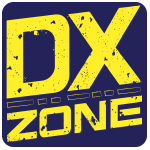WSJT-X version 2.7.3 RC-3 can be downloaded from the sourceforge.net repository.
WSJT-X 2.7.0-rc3, released on January 1, 2024, introduces new features and numerous improvements, including an “Update Hamlib” function for Windows, displaying the Hamlib version on all platforms, and enhancing the FT Roundup Messages protocol. The update also improves mode switching, right-click events, and Q65 message display. Message averaging is now restricted to VHF features, and various enhancements are made to Hamlib Transceiver code. Other notable changes include preventing redundant network communication, fixing the LotW file download without OpenSSL, enabling the spot counter for WSPR, and assigning WAE entities correctly. Additionally, a log conversion utility program ‘cablog’ is added, and several minor improvements and fixes are made throughout the application.
WSJT-X 2.7.0-rc3 Release notes
January 1, 2024
WSJT-X 2.7.0 Release Candidate 3 brings some new features, as well as
numerous detail improvements and bug fixes, such as:
– Added a new “Update Hamlib” function. On Windows, it allows the user to
update Hamlib directly from the program. The previously used version is
backed up, so the user can easily revert a hamlib update.
– The Hamlib version in use is now displayed (also on Linux and macOS).
– The FT Roundup Messages protocol has been enhanced. It now allows also
the exchange of static 4-digit numbers instead of serial numbers. This
extends the usability of the FT RU protocol for other contest types.
– Improved direct switching between modes. Submode, as well as the status
of the “Sh” and “Fast” checkboxes are now saved and restored by mode.
– Some right-click events were made more intuitive and consistent.
– Right-clicking the Q65 button enables Q65 Pileup mode, a left-click
brings you back to the normal Q65 mode.
– Right-click the JT65 button to switch to JT9 mode.
– For Q65, all messages for us are now displayed in the right window.
– Message averaging is now allowed only when VHF features are
enabled, and label texts are changed to “Single Period Decodes” and
“Average Decodes” only if averaging is enabled.
– Some improvements to the Hamlib Transceiver code. Behavior is now
more stable when Rig Split has been selected.
– Prevented redundant network communication between WSJT-X and DX Lab
Suite Commander.
– Download of the LotW file now works without OpenSSL libraries.
– Made the spot counter work for WSPR.
– Prevented insertion of an individual contest name when in Fox mode.
– WAE entities are now assigned to the correct DXCC when “Include
extra WAE entities” is not selected.
– Added a utility program ‘cablog’ which can be used to convert the
wsjtx.log file to Cabrillo format for the ARRL EME contest.
– Minor improvements to the Active Stations window.
– The Rx/Tx frequency for Echo mode has been fixed at 1500 Hz.
– Some corrections and updates to the INSTALL instructions for Linux.
– Updated CTY.DAT file.
About Release Candidate versions
A release candidate (RC) version is a pre-release version of a software product that is considered to be feature-complete and relatively stable but may still undergo further testing before the final release. Release candidates are typically made available to a wider audience, including beta testers and the general public, to gather feedback and identify any remaining issues or bugs.
About WSJT-X
WSJT-X is a computer program designed to facilitate basic amateur radio communication using very weak signals. The first four letters in the program name stand for “Weak Signal communication by K1JT,” while the suffix “-X” indicates that WSJT-X started as an extended branch of an earlier program, WSJT, first released in 2001. Bill Somerville, G4WJS, Steve Franke, K9AN, and Nico Palermo, IV3NWV, have been major contributors to development of WSJT-X since 2013, 2015, and 2016, respectively.





